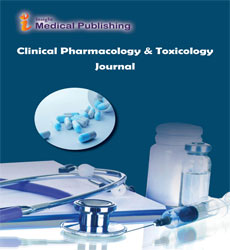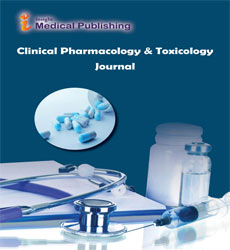Uses of Cyclohexane-1,4-Dione in the Synthesis of Heterocyclic Compounds Incorporating Tetrahydrobenzo[b]Thiophene: Synthesis, Characterization and Cytotoxicity
Abstract
Tetrahydrobenzo[b]Thiophene derivatives are well known as pharmaceutically active compounds and many of them are used as anti-cancer drugs. The aim of this work is to synthesize Tetrahydrobenzo[b]Thiophene derivative as a key starting material, use it for further heterocyclization through reaction with different reagents and then study thier cytotoxicity and kinase inhibition. 2-Amino-6-oxo-4,5,6,7-tetrahydrobenzo[b]thiophene-3-carbonitrile (3) was prepared from the reaction of cyclohexan-1,4-dione with elemental sulfur and malononitrile in1,4-dioxane containing a catalytic amount of triethylamine. The latter compound reacted with triethylorthoformate and either malononitrile or ethyl cyanoacetate in 1,4-dioxane in presence of triethylamine afforded 4H-thieno[2,3-f]chromene 10a,b. Also, the reaction of compound (3) with phenylisothiocyanate in dimethylformamide in presence of potassium hydroxide followed by addition of either α-chloroacetate or ethyl chloroacetate afforded fused thiophene and thiazole derivatives, respectively. Moreover, multicomponent reaction of compound (3) with aromatic aldehydes and either malononitrile or ethyl cyanoacetate in the presence of triethylamine or ammonium acetate to produce fused pyran and fused pyridine derivatives, respectively. All the synthesized compounds were evaluated against the six c-Met- cancer cell lines (A549, HT-29, MKN-45, U87MG, SMMC-7721 and H460) using the standard MTT assay in vitro with foretinib as the positive control. Compounds10b, 12, 23b, 23e, 24b, 24e and 24f exhibited high inhibitions. Moreover, the c-Met kinase activity of all compounds was evaluated using homogeneous time-resolved fluorescence (HTRF) and the most active compounds 7, 10a, 10b, 13, 15a, 21, 24a, 24b, 24c, 24d and 24e were further evaluated against other five tyrosine kinase (c-Kit, Flt-3, VEGFR-2, EGFR, and PDGFR) using the same screening method. Furthermore, compounds 10b, 12, 20, 21, 23a, 23b, 23e, 24b, 24e and 24f were selected to examine their Pim-1 kinase inhibition activity as these compounds showed high inhibition towards the c-Met kinase and the tested cancer cell lines. at a range of 10 concentrations and the IC50 values were calculated. The most active compounds were 10b, 23a, 23e, 24b and 24f with IC50’s 0.29, 0.036, 0.26, 0.43 and 0.31 ïÂÂÂÂM, respectively.

Open Access Journals
- Aquaculture & Veterinary Science
- Chemistry & Chemical Sciences
- Clinical Sciences
- Engineering
- General Science
- Genetics & Molecular Biology
- Health Care & Nursing
- Immunology & Microbiology
- Materials Science
- Mathematics & Physics
- Medical Sciences
- Neurology & Psychiatry
- Oncology & Cancer Science
- Pharmaceutical Sciences
